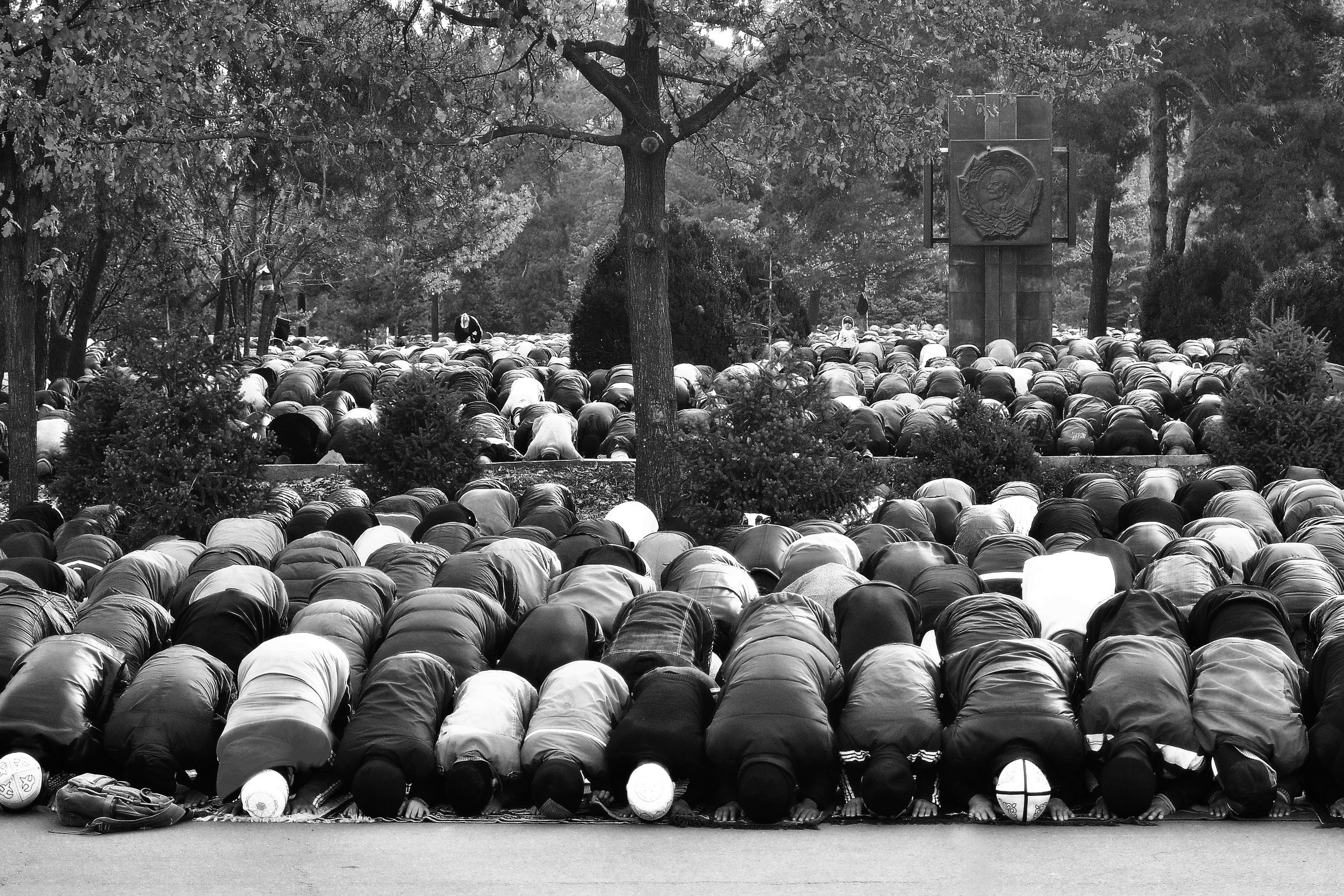The Puzzle of Kyrgyz Identity
Who are the Kyrgyz? Nomads, recent Communists or Muslims. Distances towards each of these identification constants are determined by historical puzzles. Every time, ideologies, political and economic systems construct the Kyrgyz self-identification. The asymmetric reply of the Kyrgyz is that they don’t decline these reflections but incorporate them as parts of their personal self.
Lenin stands – Lenin fell down. Nomads-Kyrgyz’s reflection of their self-identification has changed with communism entering their lives. They began to perceive themselves as a working class! Pre-Soviet practices were erased, nomads became fighters for the international revolution, farmers became citizens, and Muslims became atheists. Kyrgyzstan Capital’s Central Square, where Lenin’s sculpture, as though observing nomads-communist identity used to stand from 1982 to 2003, is a classic space of identification construction from the above echelons of the USSR. And even after gaining independence, ex-communists who confess “opium for the people”, keep “praying” under this statue. Lenin, who was towering above until 2003, “fell down” to make a circle from the facade of the Historical Museum that used to be a Museum of Revolution till 1991 to its backyard. Local authorities did not advertise this procedure, and only rare pictures succeeded in engraving the “mystery of falling down.”
Islam after communism. It was not a requirement of former nomads-communists who became Muslims to perform holiday collective prayer at the square to take away Lenin’s statue. It hindered nobody being just a monument but not Lenin himself. Every year after 1991, “new” political actors – post-soviet Muslims appeared in front of Parliament and the White House. Nowadays, Lenin’s space is a space of Muslim socialization. Youth, maturity and oldness combine in one ritual and Lenin, as a phantom from the past, became involved in formations showing different determinations.
Instead of conclusion: Lenin’s monument did not exist in the pre-Soviet period. The concept of self-identification, in which ideology functions like theatre, was familiar to the Kyrgyz. This allowed the symbolism of both “Lenin” and “Islam” to coexist within the identity, preserving a sense of permanence without diminishing. The key to this inclusion lies in the informative thinking of the Kyrgyz. The epic Manas is a fundamental informational code of Kyrgyz identity. Its sounds are not from the Middle Ages, but a reflective response to contemporary challenges." "Manas” represents the core of the concept of “kyrgyzchylyk,” meaning “being Kyrgyz.” The epic is transmitted orally by “manaschy”—the tellers who, through their deep spiritual connection to the narrative, physically and psychologically experience the words they recite. The voice of Kyrgyz identity is multifaceted and evolving. Today, this voice is increasingly heard in the recitation of the Quran by modern Kyrgyz Muslims during mass prayers, often on the same squares that once honored Lenin. The challenge lies in capturing the silhouette of an identity that is slowly fading. Contemporary Kyrgyz are not just nomads, communists, or Muslims in isolation. Instead, these elements combine to form a complex, evolving identity—one that reflects the “disappearing” yet resilient nature of Kyrgyz selfhood.
Synopsis:
The installation "The Puzzle of Kyrgyz Identity" by Shaarbek Amankul critically reflects on three key political and cultural spheres of "self" in contemporary Kyrgyzstan. The forms of Kyrgyz identity today are shaped by both the transformative events of the 20th century and cultural shifts in response to contemporary society. The collapse of the USSR and the decline of communism sparked a new Renaissance of Islam in post-Soviet countries. What elements mediate the interaction between these seemingly contradictory forces in the identity of the modern Kyrgyz citizen? In addressing this question, the voice of Sayakbai Karalaev—a famous manaschy (epic storyteller)—resonates, as his rendition of the Manas epic serves as a backdrop for understanding the complex mental constants of Kyrgyz identity. The distances to each ideological "peak" are not defined by opposition but by a symbiosis of symbols: Manas, Islam, and Lenin.
Commentary for the Photo and Video:
Every year, former communists—now post-Soviet Muslims—gather to pray at the end of Ramadan in the main square, near the Lenin monument in the capital city of the Kyrgyz Republic.
1982–2003: Lenin points to the West—the direction of Mecca.
"Lenin Before Demounting" (Photo)
2003: Lenin’s Demounting (Video)
After his relocation, Lenin now faces East.
"Lenin After Demounting" (Photo)
Commentary for the sculpture:
A bronze sculpture of Lenin, having descended from its monument, now participates in prayers alongside Muslims during Ramadan.
Commentary for the Audio Track:
The Manas epic is the largest of its kind in the world, consisting of a trilogy: Manas, Semetei, and Seitek, comprising over 600,000 verses. UNESCO celebrated its 1000th anniversary in 1995. The audio track features a passage titled “Horse Racing Taitoru”, performed by the renowned manaschy Sayakbai Karalaev.






